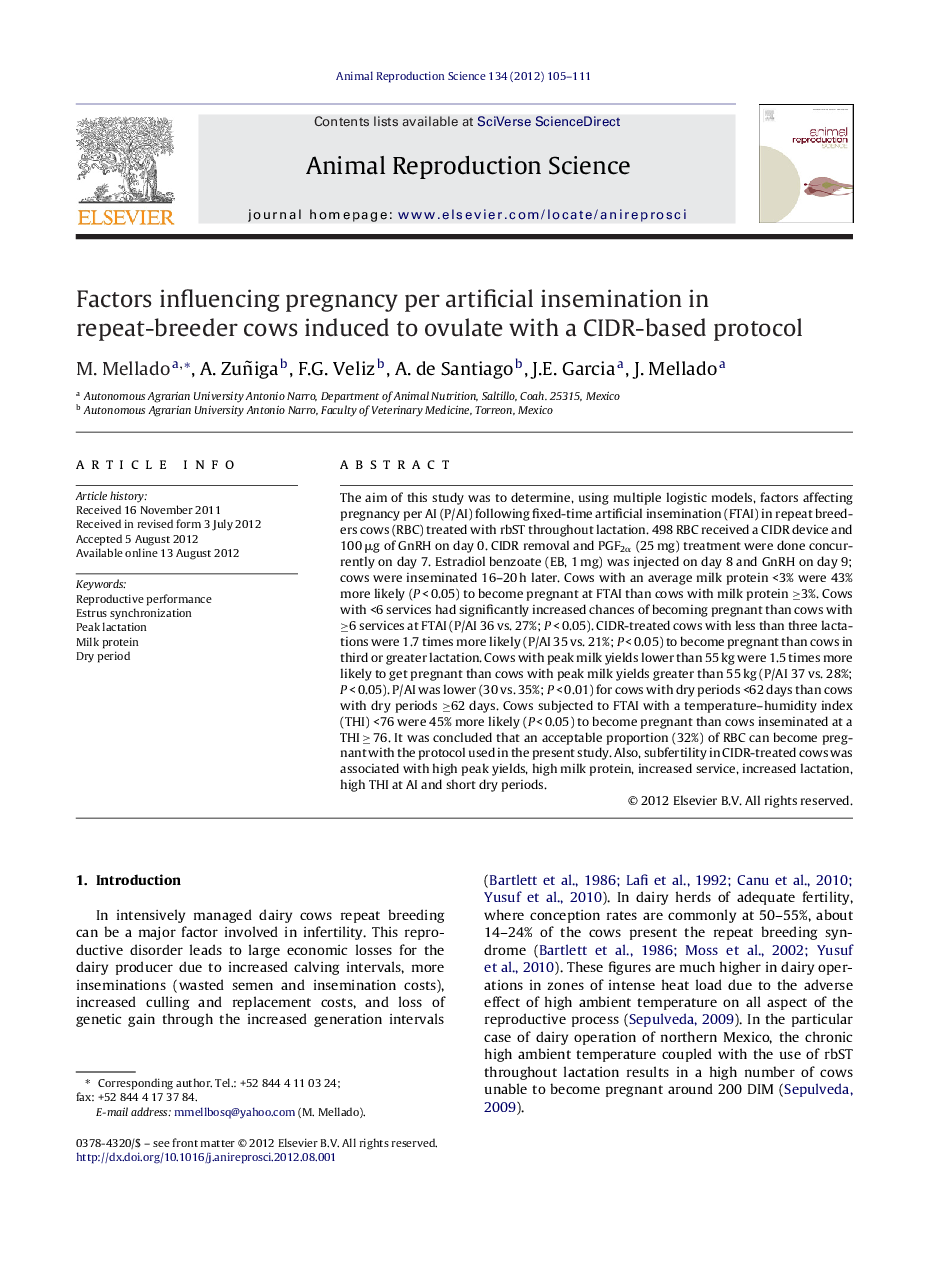| Article ID | Journal | Published Year | Pages | File Type |
|---|---|---|---|---|
| 2073124 | Animal Reproduction Science | 2012 | 7 Pages |
The aim of this study was to determine, using multiple logistic models, factors affecting pregnancy per AI (P/AI) following fixed-time artificial insemination (FTAI) in repeat breeders cows (RBC) treated with rbST throughout lactation. 498 RBC received a CIDR device and 100 μg of GnRH on day 0. CIDR removal and PGF2α (25 mg) treatment were done concurrently on day 7. Estradiol benzoate (EB, 1 mg) was injected on day 8 and GnRH on day 9; cows were inseminated 16–20 h later. Cows with an average milk protein <3% were 43% more likely (P < 0.05) to become pregnant at FTAI than cows with milk protein ≥3%. Cows with <6 services had significantly increased chances of becoming pregnant than cows with ≥6 services at FTAI (P/AI 36 vs. 27%; P < 0.05). CIDR-treated cows with less than three lactations were 1.7 times more likely (P/AI 35 vs. 21%; P < 0.05) to become pregnant than cows in third or greater lactation. Cows with peak milk yields lower than 55 kg were 1.5 times more likely to get pregnant than cows with peak milk yields greater than 55 kg (P/AI 37 vs. 28%; P < 0.05). P/AI was lower (30 vs. 35%; P < 0.01) for cows with dry periods <62 days than cows with dry periods ≥62 days. Cows subjected to FTAI with a temperature–humidity index (THI) <76 were 45% more likely (P < 0.05) to become pregnant than cows inseminated at a THI ≥ 76. It was concluded that an acceptable proportion (32%) of RBC can become pregnant with the protocol used in the present study. Also, subfertility in CIDR-treated cows was associated with high peak yields, high milk protein, increased service, increased lactation, high THI at AI and short dry periods.
